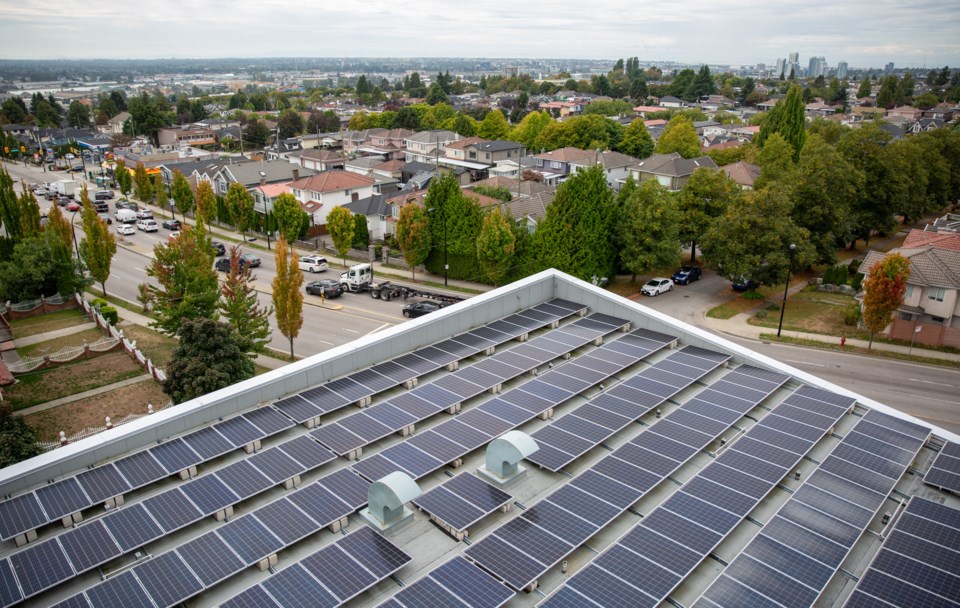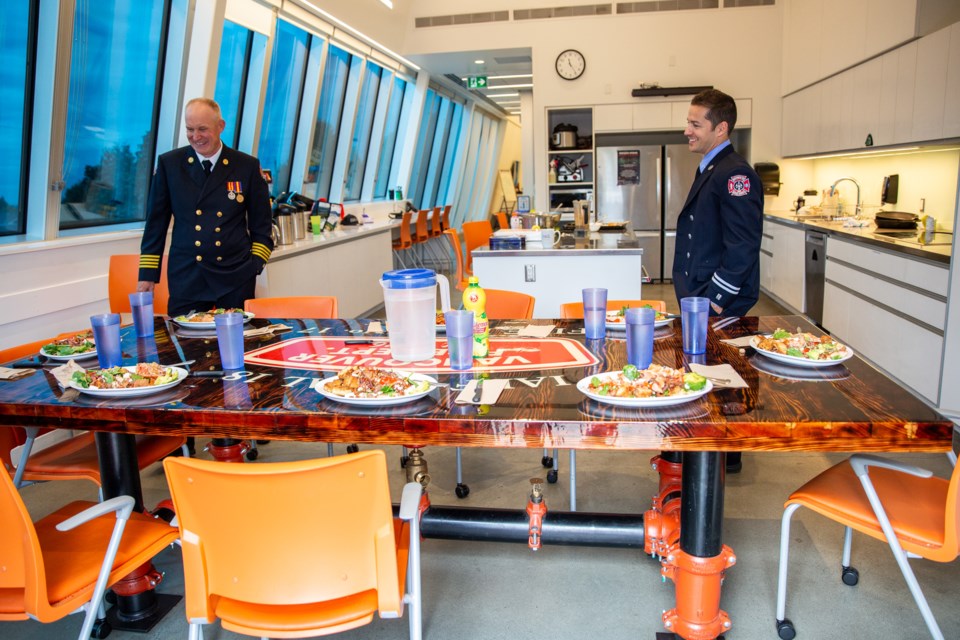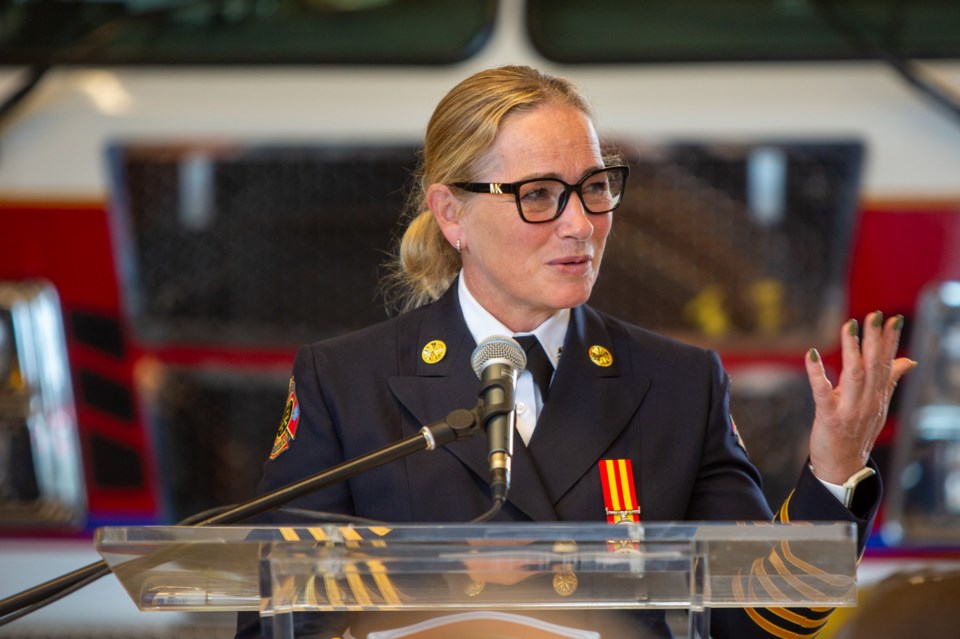It is believed to be Canada’s first ever zero-carbon fire hall and was celebrated Wednesday for that history-making fact and other features built into Vancouver’s state-of-the-art facility for firefighters.
The No. 17 fire hall at 55th Avenue and Knight Street opened in April 2022.
But it took until Wednesday to officially mark its existence in a grand way, with Fire Chief Karen Fry, Mayor Ken Sim, city councillors and serving and retired firefighters gathered inside one of the large bays of the hall, where the department’s band performed during the event.
“We are thankful for having a fire hall which encompasses so many benefits for the community as well as our firefighters, while also reducing our carbon footprint and impact on the environment,” Fry told the crowd, which included senior staff from city hall involved in the $25-million project.

'Higher indoor air quality'
Sean Pander, the city’s manager of green and resilient buildings, spoke to Glacier Media after the news conference to explain the environmental significance of the new hall, which took almost three years to build.
First, he said, it is built to internationally-recognized Passive House standards, which means it's super well insulated, airtight and recovers the heat of the exhaust air to pre-warm the incoming air.
“So it needs very little energy input to heat the building,” Pander said. “It also ensures that the air coming in is ventilated and has filtration. So it's a much higher indoor air quality.”
Second, the hall is fully electric, with all the energy it uses coming from clean hydro power; the building’s roof is covered in solar panels. Heat pump technology also allows the building to produce as much energy as it uses in a year.
Almost the entire building is fitted with special windows.
“The glass has sensors that can determine when the sun is out and it can pre-tint the windows, so that you don't get a lot of heat coming in,” Pander said.
“It helps keep the building cool and relies less on the energy used for air conditioning and by the heat pump to provide cooling.”

'Blown away'
The mayor was impressed by the technology.
“I was blown away when I heard this — it reduces the operational carbon emissions by 99.7 per cent compared to the building it replaced,” said Sim, before he joked: “So either the other building really sucked, or they did a really good job here.”
The hall is one of the bigger ones in the city, if not the biggest.
It has four bays, a large storage room for firefighters’ gear, a large kitchen with doors that open to a patio, a decontamination room, a small sauna, individual sleeping quarters, a gym, lounge, meeting spaces and a tall tower; the hall is the second largest training site in Vancouver for firefighters.

Electric fire truck
The building is also designed to survive an earthquake and serve as a post-disaster hub, with protected communications technology built into the hall, which is currently staffed with eight firefighters but has room for 12.
By comparison, No. 2 hall in the Downtown Eastside operates with 14 firefighters.
Both halls have a connection in that the temporary building used by firefighters during construction of the new No. 17 hall will eventually be relocated to a site on Gore Street that will serve as an annex to No. 2 hall.
Housing, child care
In recent years, Vancouver has become a city of firsts when it comes to the fire department, with a hall built in Champlain Heights that incorporated four floors of housing into the redevelopment of the building.
The city also has plans to replace fire hall No. 9 on Victoria Drive in Grandview-Woodland, which will also be built to Passive House standards. In Yaletown, the replacement of fire hall No. 8 will include social housing and a child-care facility.
Meanwhile, an all-electric pumper truck is scheduled to arrive in Vancouver within a month, and will operate out of the department’s main hall in Strathcona — another first for the city’s fire and rescue service.
“The West Coast, we call progressive — we care about our environment, we care about our people,” said Fry, when asked about unique investments in the department’s infrastructure. “Every little thing we can do to protect our staff, to reduce our impact on our environment, we do. It's something that we're proud of.”




